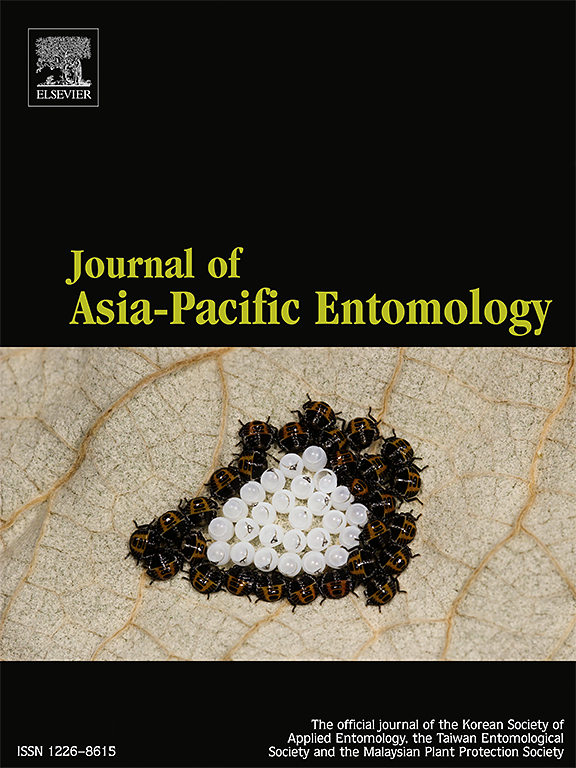Metagenomic approaches reveal the variations of microbiota structures and functions with the growth of Melanaphis sacchari
IF 1.3
3区 农林科学
Q3 ENTOMOLOGY
引用次数: 0
Abstract
Melanaphis sacchari, commonly known as the sugarcane aphid, is a small sap-sucking insect that transmits several plant viruses, including Sugarcane mosaic virus and Sugarcane yellow leaf virus, both of which result in reduced crop yield and quality. This study explores the microbiota structure and function in different developmental stages of M. sacchari by using full-length 16S rRNA gene sequencing. Alpha diversity indices were used to compare microbiota diversity across these stages. Key bacteria, such as Buchnera aphidicola, Burkholderia stabilis, and Paenibacillus pasadenensis, were identified and quantified, showing that both diversity and abundance of bacterial communities vary across aphid stages. Buchnera aphidicola is most abundant in egg period compared to other stages. Functional predictions based on the KEGG database indicated that most bacterial genes are associated with metabolism. This study provides a foundational understanding of the bacterial microbiota in M. sacchari, enhancing insights into the complex interactions between microbiota and host insects and highlighting the essential role of microbiota in M. sacchari development.

宏基因组学方法揭示了糖黑蚜生长过程中微生物群结构和功能的变化
甘蔗蚜(Melanaphis sacchari),俗称甘蔗蚜虫,是一种小型吸液昆虫,传播几种植物病毒,包括甘蔗花叶病毒和甘蔗黄叶病毒,这两种病毒都会导致作物减产和质量下降。本研究利用16S rRNA基因全长测序技术,探讨了糖分枝杆菌不同发育阶段的菌群结构和功能。采用α多样性指数比较各阶段微生物群的多样性。关键细菌,如蚜虫布氏杆菌、稳定伯克霍尔德菌和帕萨迪纳芽孢杆菌,被鉴定和量化,表明细菌群落的多样性和丰度在蚜虫的不同阶段有所不同。与其他阶段相比,蚜虫在卵期数量最多。基于KEGG数据库的功能预测表明,大多数细菌基因与代谢有关。本研究为糖支原体细菌微生物群的研究提供了基础,增强了对微生物群与寄主昆虫之间复杂相互作用的认识,并突出了微生物群在糖支原体发育中的重要作用。
本文章由计算机程序翻译,如有差异,请以英文原文为准。
求助全文
约1分钟内获得全文
求助全文
来源期刊

Journal of Asia-pacific Entomology
Agricultural and Biological Sciences-Insect Science
CiteScore
2.70
自引率
6.70%
发文量
152
审稿时长
69 days
期刊介绍:
The journal publishes original research papers, review articles and short communications in the basic and applied area concerning insects, mites or other arthropods and nematodes of economic importance in agriculture, forestry, industry, human and animal health, and natural resource and environment management, and is the official journal of the Korean Society of Applied Entomology and the Taiwan Entomological Society.
 求助内容:
求助内容: 应助结果提醒方式:
应助结果提醒方式:


